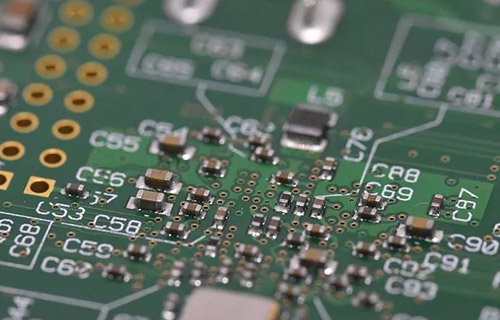Abstract: This article introduces the design principle of a simple tool for removing the edge of the PCBA board process. The tool can quickly and reliably cut PCB boards of various sizes and pre-engraved with V-shaped grooves. It is hoped that it will be helpful to related engineering designers.
1. Development background
PCBA (printed board assembly) refers to the printed circuit board that has completed the assembly of components, and is widely used in various fields such as aviation, numerical control, computer, and automation equipment. Due to the requirements of manufacturing and logistics and other factors, it is necessary to reserve a process edge on the edge of the PCBA board to achieve the purpose of turnover. This process edge is not required for products. Therefore, it is necessary to remove the PCBA board process edge after the component assembly is completed. The methods of removing the process edge of PCBA board can be roughly divided into three categories: V-cut splitter, milling splitter and manual process edge removal. For example, from the point of view of quality, the effect of the milling cutter (also known as the milling cutter type cutter, the curve cutter) overcomes the limitation that the V-cut cutter can only be divided in a straight line, and mainly uses the milling cutter. High-speed operation is a device that separates multi-piece PCBAs according to pre-programmed paths, replacing manual breaking or V-cut cutting defects, improving product quality and reducing scrap rate. The disadvantage is that it is expensive and complicated to operate (requires programming); V- The price of the cut splitter is much cheaper. The blade is used to cut along the V-groove of the PCBA, but it can only be cut in a straight line, and the cost of the blade consumables is relatively expensive. Two types of plates. Manually removing the process edge is broken by hand or divided by tools such as needle-nose pliers, which has the advantages of low cost and convenient use, but it is easy to generate stress and cause damage to components. For small batch, multi-variety and low-cost manufacturing requirements, it is practical to manually remove the edge of the board, but in this way, the contradictions of batch, cost and reliability problems are highlighted. In order to solve these problems, we have developed a simple tooling for manual removal of PCBA boards, which takes into account these problems and solves the above contradictions to a certain extent.

2. Tooling design scheme
This tooling achieves the purpose of removing the edge of the process through a simple mechanical structure, so the cost is low. Through a series of adjustable structures, it can meet the needs of adapting to the process edge of different sizes and thicknesses, and the PCBA board in the process of removing the edge of the process is reduced by mechanical fixing. The stress on the machine achieves the purpose of improving the quality of work. In this way, the use of the tooling device can meet the requirements of variety, low cost and high quality in removing process edges, so it is a practical, convenient and inexpensive auxiliary device. The tooling adopts the following technical scheme: an adjustable auxiliary device for manually removing the process edge of the PCBA board, including an installation bottom plate, a slider base, a movable slider, an adjustment button and a transmission structure. Manually adjust the adjustment button to drive the movable slider to move along the set track on the slider base through the transmission structure. After reaching the appropriate distance, put the process edge to be removed from the PCBA board into the slot of the device, and hold the bottom of the PCBA board with both hands. The function of manually removing the process edge can be realized by gently applying force in one direction. The specific working principle can be seen in Figure 3. It should be noted that both hands should not hold the upper part of the PCBA and exert force. Also, it is easy to cause damage to the PCBA. As a preferred embodiment, the installation base plate of the tooling can be a workbench, or other forms of workbenches, not limited to the form of the base plate; The movable fit and structural form are not limited to various types of movable fit and structural forms; its adjustment button can be manual rotation adjustment or other forms of adjustment buttons, not limited to the form of adjustment buttons; its transmission structure can be a cone Gear transmission or other forms of transmission structures are not limited to the transmission structure.
Compared with the prior art, the tooling has the following advantages:
(1) Low production cost;
(2) Simple operation;
(3) The quality of the removal process edge is good, and the components on the PCBA board are subject to less stress;
(4) It has a wide range of applications and can adapt to PCBA boards with different thicknesses and board margins;
(5) The structure is flexible and convenient, and can be manually adjusted to adapt to PCBA boards of various thicknesses and sizes.
3. Conclusion
The application of the auxiliary device for manually removing the process edge of the PCBA board of the utility model not only takes into account the stress control requirements of the PCBA when the process edge is removed, but also takes into account the cost control of production. In this way, this tooling can replace the high-cost special equipment, so it is a practical, convenient, flexible and changeable auxiliary device that can reduce the overall cost. It can be widely used in PCBA process edge removal, becoming a reliable solution. plan.